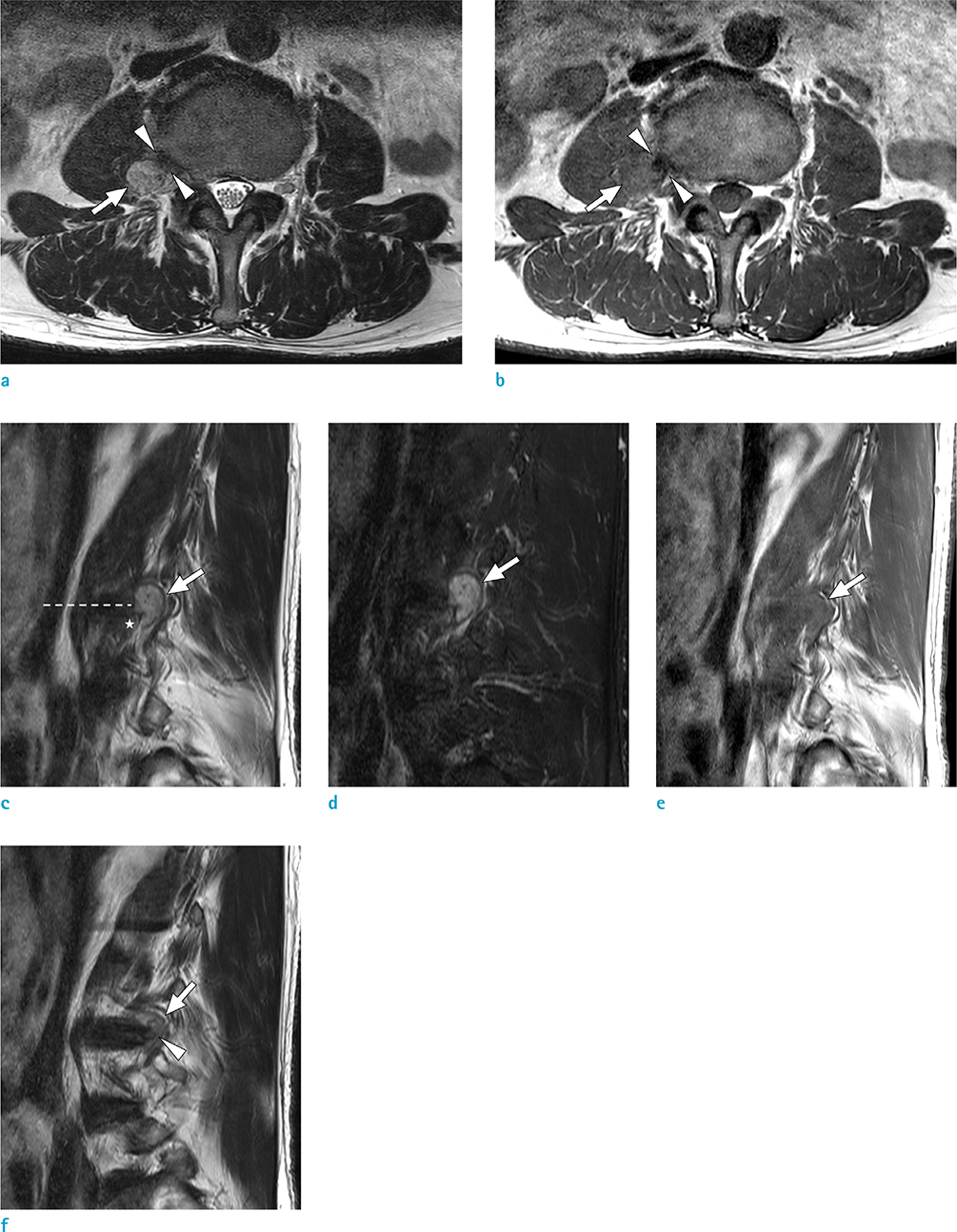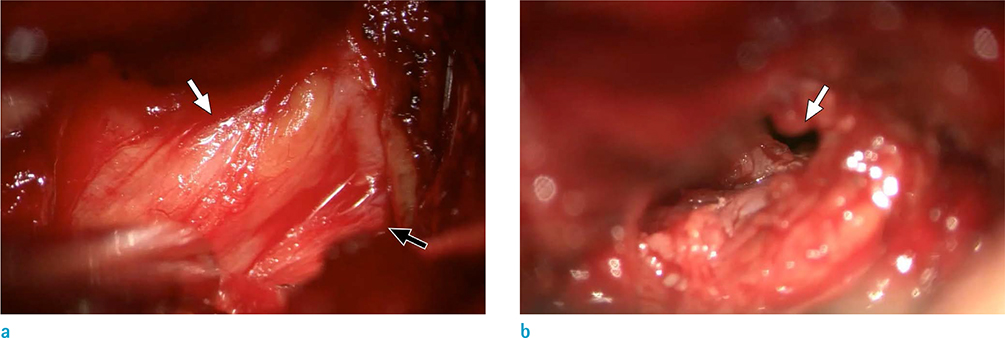Investig Magn Reson Imaging.
2017 Jun;21(2):109-113. 10.13104/imri.2017.21.2.109.
Extraforaminal Extrusion of Intervertebral Disc Misdiagnosed as Neurogenic Tumor: a Case Report
- Affiliations
-
- 1Department of Rehabilitation Medicine, Gyeongsang National University School of Medicine and Gyeongsang National University Changwon Hospital, Changwon, Korea.
- 2Department of Neurosurgery, Gyeongsang National University School of Medicine and Gyeongsang National University Changwon Hospital, Changwon, Korea.
- 33Department of Radiology, Gyeongsang National University School of Medicine and Gyeongsang National University Changwon Hospital, Changwon, Korea. drlotus@naver.com
- KMID: 2385609
- DOI: http://doi.org/10.13104/imri.2017.21.2.109
Abstract
- A 55-year-old male presented with dysesthesia of the right anteromedial thigh. A magnetic resonance image revealed a globular mass at the right extraforaminal area of the L3/4 level. Based on the diagnosis of neurogenic tumor, surgical excision was performed. The surgical impression and pathology confirmed extrusion of intervertebral disc. In a retrospective review of the magnetic resonance image, we noticed a fibrillary pattern directed from the intervertebral disc space to the lesion, and disrupted annulus fibrosus and indentation caused by the ring apophysis. We suggest aforementioned features, indicative of intervertebral disc lesions, to be checked when interpreting mass lesions around the intervertebral foramen.
Keyword
MeSH Terms
Figure
Reference
-
1. Bakar B, Sumer MM, Cila A, Tekkok IH. An extreme lateral lumbar disc herniation mimicking L4 schwannoma. Acta Neurol Belg. 2009; 109:155–158.2. Dimogerontas G, Paidakakos NA, Konstantinidis E. Voluminous free disk fragment mimicking an extradural tumor. Neurol Med Chir (Tokyo). 2012; 52:656–665.3. Fardon DF, Williams AL, Dohring EJ, Murtagh FR, Gabriel Rothman SL, Sze GK. Lumbar disc nomenclature: version 2.0: Recommendations of the combined task forces of the North American Spine Society, the American Society of Spine Radiology and the American Society of Neuroradiology. Spine J. 2014; 14:2525–2545.4. Bloomer CW, Ackerman A, Bhatia RG. Imaging for spine tumors and new applications. Top Magn Reson Imaging. 2006; 17:69–87.5. Abreu E, Aubert S, Wavreille G, Gheno R, Canella C, Cotten A. Peripheral tumor and tumor-like neurogenic lesions. Eur J Radiol. 2013; 82:38–50.6. Jee WH, Oh SN, McCauley T, et al. Extraaxial neurofibromas versus neurilemmomas: discrimination with MRI. AJR Am J Roentgenol. 2004; 183:629–633.7. Abul-Kasim K, Thurnher MM, McKeever P, Sundgren PC. Intradural spinal tumors: current classification and MRI features. Neuroradiology. 2008; 50:301–314.8. Pilavaki M, Chourmouzi D, Kiziridou A, Skordalaki A, Zarampoukas T, Drevelengas A. Imaging of peripheral nerve sheath tumors with pathologic correlation: pictorial review. Eur J Radiol. 2004; 52:229–239.9. Weyreuther M, Heyde CE, Westphal M, Zierski J, Weber U. MRI atlas. Orthopedics and neurosurgery, the spine. Berlin, Heidelberg: Springer-Verlag;2007. p. 106–107.10. Daghighi MH, Pouriesa M, Maleki M, et al. Migration patterns of herniated disc fragments: a study on 1,020 patients with extruded lumbar disc herniation. Spine J. 2014; 14:1970–1977.
- Full Text Links
- Actions
-
Cited
- CITED
-
- Close
- Share
- Similar articles
-
- Far lateral lumbar disc extrusion in a dachshund dog
- Paramedian Tangential Approach for the Lumbosacral Extraforaminal Disc Herniations
- Spontaneous Regression of a Large Lumbar Disc Extrusion
- The Morphometric Analysis of the Extraforamen in the Lumbosacral Spine: Magnetic Resonance Imaging and Computed Tomography Study
- Correlation of Magnetic Resonance Imaging of Lumbar Herniated Intervertebral Disc with Operative Findings



